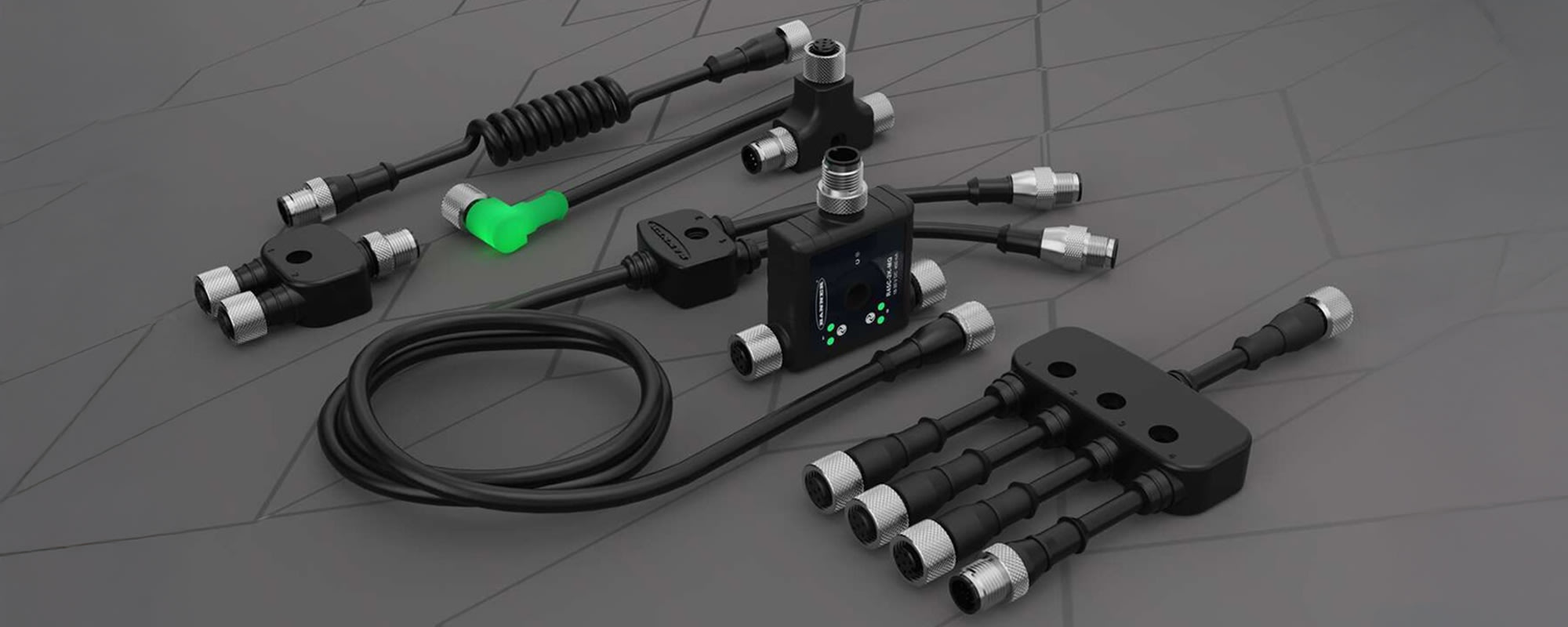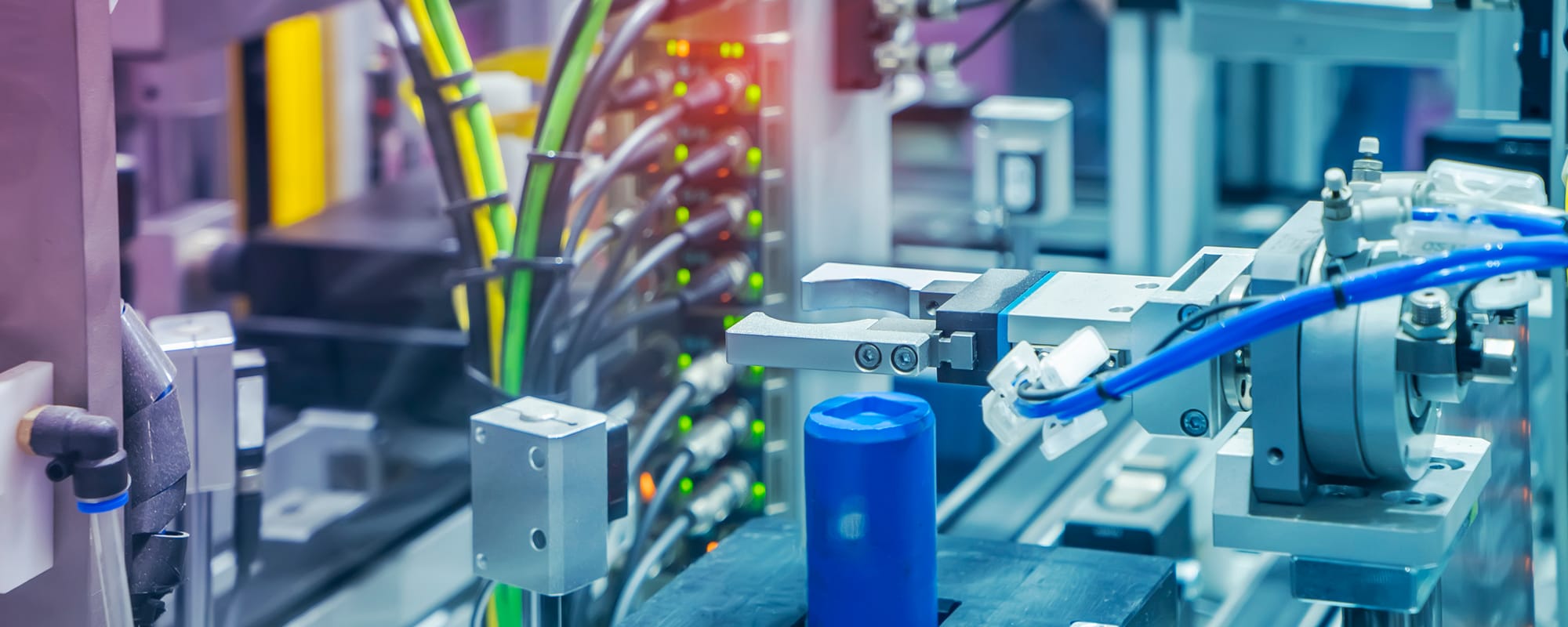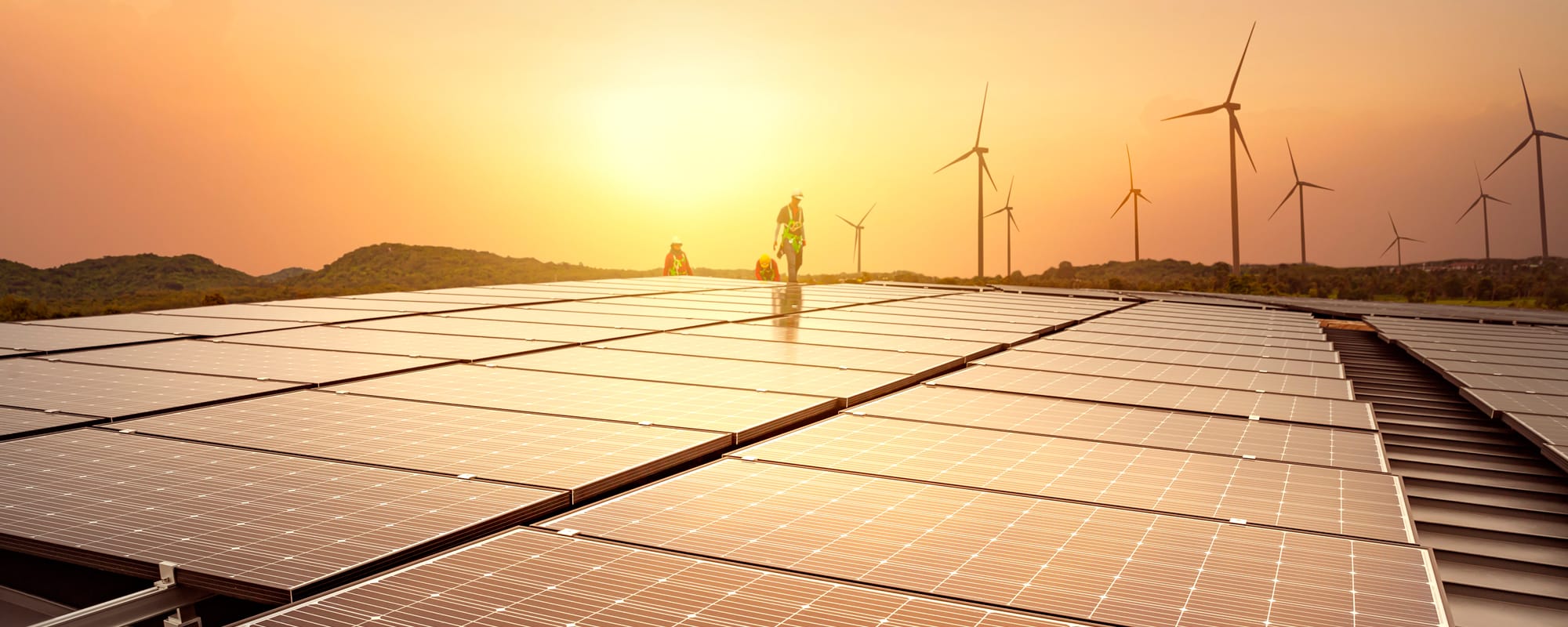Condition monitoring is an essential element of asset management in the energy and utilities industry. The American oil and gas, water and wastewater, and electrical grid sectors have historically struggled with effective asset management and are currently suffering from related effects. Thankfully, a new $50 billion investment in American infrastructure, combined with an array of advanced remote condition monitoring solutions, can overcome current challenges as well as reduce maintenance and repair costs and increase uptime and profitability.
All companies prioritize asset management to an extent. But asset management is about more than just dollars and cents. Depending on the company, the failure of a multimillion-dollar piece of equipment, or even a single component in an essential computer, can have ramifications that extend far beyond potentially astronomical costs. Without exaggeration, lives can be on the line.
Want proof? Consider the energy and utilities industry and how critical its various sectors are to our safety and survival. For example, oil and gas power much of the electricity that runs our homes, businesses, and infrastructure, and if the energy grid infrastructure used to transmit that electricity fails, it can directly impact public health and safety. This is especially true during extremely hot or cold weather, but a major outage would also affect much of our transportation infrastructure and put people ranging from drivers to subway passengers at risk. Similarly, water and wastewater systems ensure that the H20 we consume is safe for consumption and that waste and wastewater don’t back up in our homes and on our streets and create public health problems.

If an essential asset in any one of these sectors fails, the consequences can stretch far and wide and can be quite dire. Residents of Flint, Michigan, for instance, are still dealing with the effects of lead contamination in their water system nine years after the news broke, and that disaster continues to negatively affect people’s lives and well-being. So, effective asset management is vital for the energy and utilities industry.
Condition monitoring is one of the most effective forms of asset management today. Condition monitoring technologies allow companies to schedule maintenance more effectively and, in doing so, to minimize maintenance and repair costs, accurately predict and budget for future maintenance and equipment costs, simplify and minimize the costs of asset lifecycle management, and reduce asset downtime from equipment maintenance or failures. But despite near-universal recognition of the value of condition monitoring, for one reason or another, many companies — including companies in various sectors of the energy and utilities industry — either neglect or struggle to implement it.
However, given the extensive selection of condition monitoring solutions available today, implementing these technologies is far easier and more affordable than you might think. Regardless of the particular risks that your company faces, there are readily available conditioning monitoring solutions that are perfect for you.
What Is Condition Monitoring?
Condition monitoring solutions, including sensors, programmable logic controllers (PLCs), and Industrial Internet of Things (IIoT) technologies, give users the ability to monitor the status, behavior, and performance of machinery in real time. Users can then leverage that data to proactively identify and correct potential problems before they result in unplanned downtime and associated expenses or compromise site safety.
Nearly all industrial markets can benefit from condition monitoring solutions. But it’s virtually essential to some, including the energy and utilities industry, which is rife with environmental hazards and safety risks, replete with valuable assets that can be astronomically expensive to repair, and subject to various market challenges that can also be at least partially overcome with condition monitoring technologies. For example, the energy and utilities industry is subject to the skilled labor shortages plaguing nearly every industrial market segment, which can make effective manual asset management difficult or even impossible. It’s also sensitive to supply chain disruptions, which can trickle directly down to consumers and can even have political effects — especially in the oil and gas industry.
So, to better protect employees, equipment, and the environment, eliminate unplanned downtime, and reduce the time, cost, and manpower associated with conducting on-site maintenance and repairs at the remote facilities common throughout the energy and utilities industry, a growing number of companies are deploying remote condition monitoring systems.
Remote Condition Monitoring
Remote condition monitoring systems must fulfill three main criteria: They must be heavily interconnected and capable of transferring data in real time and presenting that data in an actionable way.
Here’s a basic idea of how it works: Sensors attached to equipment and connected to a network collect and relay a consistent stream of data to a central processing unit or cloud platform that’s capable of analysis and equipped with a human-machine interface (HMI), like a dashboard or application, that presents operators with actional insights and allows them to remotely control networked equipment. Since the data is delivered in real time and the analyses are designed to support proactive maintenance, remote adjustments (e.g., to power levels, rotations per minute, etc.) can correct some issues, mitigate others, and — at the very least — allow users to acquire parts and labor and schedule on-site maintenance to minimize production disruptions.
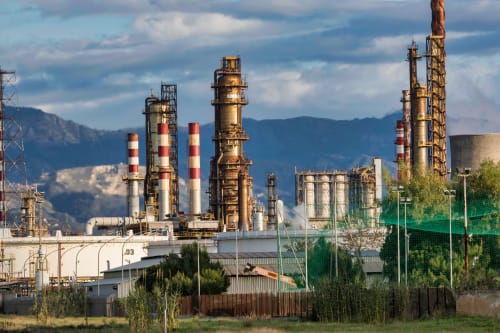
What’s even better is that remote condition monitoring solutions have proliferated in recent years. Now, solutions such as PLCs, remote I/O modules, IIoT gateways, flowmeters, protocol converters, panel meters, digital power and energy meters, and HMI displays — including models optimized for use in harsh environments, like oil and gas, water and wastewater, and electrical grid facilities — are readily available from many of the automation and process control industry’s most trusted suppliers.
Condition Monitoring for Oil and Gas Assets
The more valuable the asset, the more essential condition monitoring systems become. In terms of asset value, few industrial market segments require more investment than the oil and gas industry, which, according to an IBIS World market research report, generated about $5 trillion in global revenue in 2022. The oil and gas industry is typically divided into three primary segments — upstream, midstream, and downstream — and each has its own unique risks and challenges that robust remote condition monitoring solutions can help users overcome.
- Upstream – Companies in the upstream segments of the oil and gas industry include the exploration and production (E&P) companies and contract drilling companies that extract the raw materials from the earth. This segment requires huge investments into highly advanced equipment — such as well heads, production and test manifolds, production separators, pumps, and HVAC and air pumping systems — that’s engineered to withstand some of the most remote environments and extreme conditions on the planet, ranging from the hottest deserts to the Arctic. As such, companies in this segment stand to gain a great deal of value from remote condition monitoring solutions that allow them to track the status and performance of their expensive assets and potentially even make remote equipment adjustments.
- Midstream – Companies that operate in the midstream of the oil and gas industry are focused mainly on transportation tasks, including shipping, trucking, piping, and raw material shortage. As such, this segment is heavily reliant upon equipment including rail lines, oil tankers, trucks, pipelines, tanks, compressors, pumps, loading and unloading skids, metering systems, and sand separators — all of which requires real-time monitoring and regular maintenance to ensure safe and compliant transport and storage.
- Downstream – Companies in the downstream segment of the oil and gas industry typically deliver oil and gas products to one of two places — a refinery, where the raw material is refined into oil, jet fuel, heating oil, or asphalt, or a gas station — and are heavily dependent on the segments further up the chain. Like midstream companies, they also rely on safe and functional storage equipment, and like upstream companies, they can often benefit from remote condition monitoring solutions since refineries are typically at least somewhat remote and replete with safety hazards, and gas station storage tanks are located underground.
Conditioning monitoring solutions ideal for keeping close tabs on upstream, midstream, and downstream oil and gas industry assets include PLCs and remote I/O modules.
Due to the extremely high costs of oil and gas equipment and the catastrophic consequences at stake if they are not maintained, companies in this sector can benefit from the use of advanced industrial controllers like programmable logic controllers (PLCs). Designed to control industrial equipment including motors, valves, and safety shut-offs, PLCs are essentially small computers with numerous inputs that receive performance data from one or more machines and devices, present that data to on-site or remote users, and send operating instructions based on the analysis of that data to locally or remotely connected equipment. Most industrial controllers are flexible, scalable, and cost-efficient, and many can run detailed real-time diagnostics and reliably withstand a range of harsh-environment conditions.

For example, Opto 22 groov edge-programmable industrial controllers (EPIC) like the GRV-EPIC-PR1 (pictured left) provide control, connectivity, data handling, and visualization at the edge of your network, are ideal for IIoT and automation applications, and are rated for operating temperatures extending from -20°C to +70°C. These industrial controllers are compact, sturdy, and equipped with a high-resolution, resistive-touch LCD display for I/O and network configuration, troubleshooting, and system HMI. They feature dual independent Gigabit Ethernet network interfaces that allow you to maintain separate connections with your back-office network and controls network and dual USB ports that enable serial communications, communication with touchscreen monitors, and network connections with authorized Wi-Fi adapters. They also have an HDMI port that supports external monitors, which is particularly useful in OEM applications where EPIC PLCs are built into machinery. In addition, Opto 22 groov EPIC industrial controllers include a variety of security features essential to building a secure network, which — combined with their rugged form factor and extensive functionality — make them especially well-suited for use in oil and gas applications.
For example, Opto 22 groov edge-programmable industrial controllers (EPIC) like the GRV-EPIC-PR1 (pictured left) provide control, connectivity, data handling, and visualization at the edge of your network, are ideal for IIoT and automation applications, and are rated for operating temperatures extending from -20°C to +70°C. These industrial controllers are compact, sturdy, and equipped with a high-resolution, resistive-touch LCD display for I/O and network configuration, troubleshooting, and system HMI. They feature dual independent Gigabit Ethernet network interfaces that allow you to maintain separate connections with your back-office network and controls network and dual USB ports that enable serial communications, communication with touchscreen monitors, and network connections with authorized Wi-Fi adapters. They also have an HDMI port that supports external monitors, which is particularly useful in OEM applications where EPIC PLCs are built into machinery. In addition, Opto 22 groov EPIC industrial controllers include a variety of security features essential to building a secure network, which — combined with their rugged form factor and extensive functionality — make them especially well-suited for use in oil and gas applications.
Companies in the oil and gas sector of the energy and utilities industry can also benefit from remote I/O modules, which enable data communication between a central processing unit, like a PLC, and remote devices, like sensors, control valves, motors, and actuators, within an extensive network. Compared to local I/O modules, remote I/O modules require minimal wiring, which reduces both complexity and cost; can work in almost any configuration, regardless of location; and, since they’re field devices, are typically designed to withstand extreme temperatures and weather.
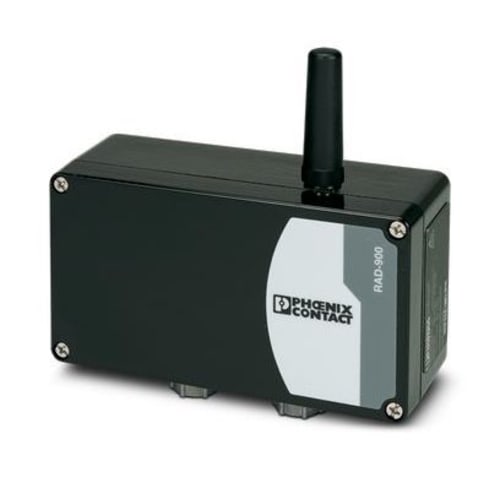
Phoenix Contact’s Radioline remote I/O modules, like the RAD-900-DAIO6 wireless I/O communication module (pictured left), are some of the most advanced and reliable remote I/O modules currently available. Like all Radioline wireless system solutions, Radioline remote I/O modules are equipped with trusted Wireless 2.0 technology optimized for reliability in large industrial environments as well as AES encryption, frequency hopping and coexistence management capabilities, and a thumbwheel that allows users to assign inputs and outputs quickly and easily without any programming. They’re also capable of transmission ranges up to 32km, transmitting both I/O signal and serial data, and supporting various network structures ranging from simple point-to-point connections to complex mesh networks with up to 250 stations. Features specific to RAD-900-DAIO6 remote I/O modules include NEMA 4x housings designed to reduce installation time and complexity and compatibility with AC mains or DC control voltages. Ideal applications for this and other Radioline wireless system solutions extend throughout the energy and utilities, process, water and wastewater, and transportation industries and include ATEX Zone 2 environments.
Condition Monitoring for Water and Wastewater Assets
Water and wastewater systems consist of arrays of pipeline networks and localized facilities, such as pump stations and treatment plants, and are incredibly complex. These systems are imperative for society, as well as essential to virtually all industries, which means that they should be monitored and maintained with the utmost care. When they aren’t, the costs — both financial and otherwise — can be immense. However, due to a prolonged lack of investment in the industry, much of the critical equipment used in American water and wastewater processes is decades — if not a century — old. According to an American Society of Civil Engineers (ASCE) report, the 16,000 wastewater treatment plants in the U.S. are currently operating on average at 81% capacity, 15% have reached or exceeded their capacity, and the overall grade for U.S. water and wastewater systems is a D+.
But it’s not all doom and gloom. The same ASCE report also said that more prevalent use of asset management strategies like remote condition monitoring can help 62% of the utilities surveyed proactively manage wastewater infrastructure maintenance. And with the passing of the 2023 Bipartisan Infrastructure Law, the U.S. dedicated over $50 billion to improving the country’s water, wastewater, and stormwater infrastructure, which is the single largest investment in water in U.S. history. As such, there has never been a better time for companies in this industry to bring their asset management systems into the 21st century with remote condition monitoring technologies.
A great place to start this journey would be with updated flowmeters, which are used to measure the volume of water traveling through the piping. In many water facilities, it’s not uncommon to find flowmeters over 30 years old. While they can often still function despite their age, these meters can be difficult to validate and can only be trusted after comparing them to other readings taken downstream, which is time-consuming and inefficient, especially in light of widespread staffing issues.
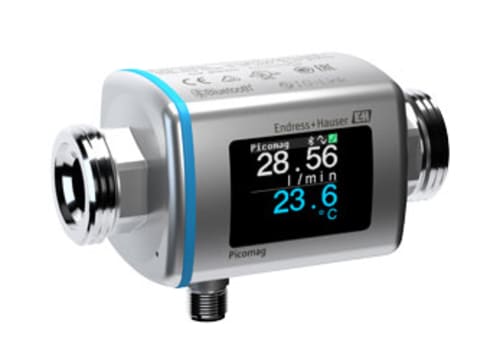
Flowmeter technology has come a long way in the last 30 or so years. For example, in addition to being renowned for their space-saving and flexible installation capabilities, Endress+Hauser’s Picomag Series electromagnetic flowmeters (pictured left) support intuitive operation via the SmartBlue smartphone app as well as secure and simple commissioning. They also leverage a bidirectional measurement principle that’s virtually independent of pressure, density, temperature, and viscosity, which makes them ideal for process quality control and monitoring in utilities applications. Other features that make them well-suited for water and wastewater applications include shock-, vibration-, and ingress-resistant (IP65/67) form factors equipped with IO-Link capabilities, various I/Os for all line sizes, and a large, user-friendly, backlit display for local process monitoring.
Upgrades shouldn’t stop there, though. Ensuring that the data from your smart new flowmeters is transmitted quickly and accurately and accessible remotely requires reliable IIoT gateways, which aggregate data from multiple smart devices, sensors, and IIoT modules and send it to the cloud.
Red Lion’s FlexEdge IIoT gateways have a future-proof modular design that accommodates field-installable sleds, make it quick and easy to configure secure communications or robust automation capabilities, boast hazardous location (HazLoc) certifications including UL Class1, Division 2, and ATEX/IECEx, and are an excellent option for implementing condition monitoring for water and wastewater assets. DA70A FlexEdge IIoT gateways with scalable I/O feature advanced networking capabilities, allow for up to three communications sleds to be added as requirements change or new communication standards emerge, support more than 300 industrial drivers and IIoT cloud connectors, communicate with almost every PLC and industrial equipment brand, and securely transmit data. They’re also rated for operating temperatures extending from -40°C to +75°C, available with rugged, field-installable proportional–integral–derivative (PID) control and I/O modules capable of adapting to almost any industrial application demand, and equipped with a diagnostic ring light that provides at-a-glance insights into system operation. Additional features include VPN client/server capabilities with certificate generation, point and click connectivity to IIoT cloud platforms, real-time data, event, and security logging with cryptographic signature support, and three widescreen virtual HMI options for remote monitoring and control.
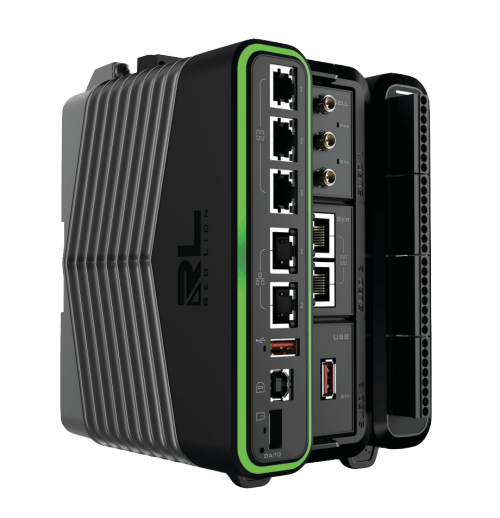
Condition Monitoring for Electrical Grid Assets
No discussion of the energy and utilities industry would be complete without a mention of the electrical grid — an incredible feat of engineering consisting of power plants, substations, transformers, transmission lines, and distribution lines all dedicated to generating, transmitting, and simultaneously distributing electricity to millions of users over hundreds of thousands of miles. In the U.S. alone, the electrical grid connects about 145 million households and businesses.
This critical infrastructure also has its share of issues, though. For example, in 2012, the U.S. experienced 18 separate natural disasters that strained outdated infrastructure and left millions of Americans without power. And power outages result in far more than just inconveniences. According to the Department of Energy (DOE), these losses cost American businesses an average of $150 billion annually.

In addition, acts of nature aren’t the grid’s only concern. The DOE also reported that 2022 saw a 77% increase in physical attacks on the grid, and due to the age of many grid technologies, even a small attack can cause cascading failures, or the failure of one component to bring down an entire sector. In its current state, the U.S. electrical grid cannot handle much stress. According to the Grid Deployment Office, roughly 70% of transmission lines are at least 30 years old and approaching the end of their lifecycle, and 60% of the circuit breakers are more than 35 years old despite having a recommended lifecycle of 20 years.
Given the state of the grid and the high cost of failures, remote condition monitoring in this sector is a necessity — and with $30 million from the U.S. government as part of the Bipartisan Infrastructure Law, it’s the perfect time to implement it.
Central to any remote condition monitoring system for electrical grid assets is a reliable protocol convertor. Used to enable interoperability between devices or systems with incompatible communication protocols by converting one to another, protocol converters — which are also known as protocol or IoT gateways — are essential for bringing legacy equipment into IIoT networks and supporting predictive maintenance strategies.
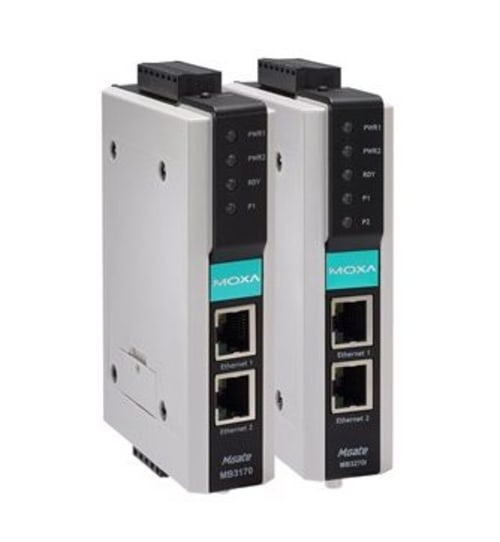
Moxa’s MGate MB3170 and MB3270 Series serial-to-Ethernet Modbus gateways, for instance, are used to bridge the communication gap between serial and Ethernet grid devices and remove impediments to sending comprehensive system data to a control device, like a PLC, or a cloud-based equipment monitoring system (EMS) where users can analyze and act upon it to reduce wasted energy and maintain suitable power distribution conditions. These one- and two-port Modbus gateways have a rugged, DIN-rail-mountable design with optional built-in optical isolation for serial signals and support auto device routing for easy configuration, TCP port or IP address routing for flexible deployment, up to 32 Modbus TCP servers, and up to 31 or 62 Modbus RTU/ASCII slaves. They also feature built-in Ethernet cascading for easy wiring, emergency request tunnels for QoS control, and embedded Modbus traffic monitoring for easy troubleshooting and are available with operating temperature ratings extending from -40°C to +75°C.
Panel meters or digital power and energy meters are also essential condition monitoring solutions for electrical grid assets. These devices display the analog or digital signal value of connected devices, such as sensors, and often include alarm and data transfer capabilities.
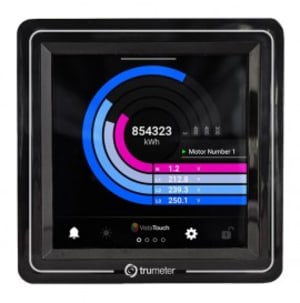
Trumeter’s Vista Touch power meters provide optimal power monitoring for single, split, and three-phase networks and support proven industrial communication protocols including Modbus RTU (RS485) and TCP/IP (Ethernet). These IoT-ready power meters also feature a vibrant graphical display with a touchscreen interface that enables full configurability and a free subscription to the Trumeter Cloud Dashboard that enables built-in remote monitoring capabilities right out of the box. Additional features include 1% accuracy across the rated input range, standard ¼ DIN mounting, and the ability to load and save configuration data to a USB flash drive for quick setups.
Human-machine interfaces (HMIs) — graphical control panels used to monitor and manage PLCs, remote terminal units (RTUs), and other intelligent electronic devices (IEDs) — are another key element of condition monitoring systems for energy and utilities assets and are widely used in all three major sectors.
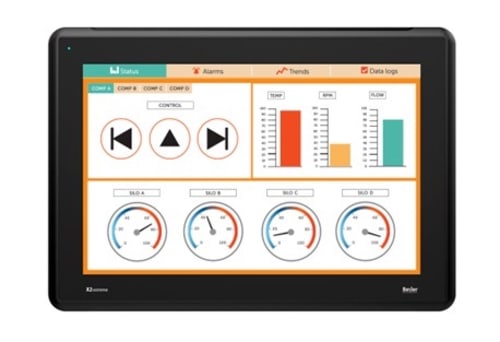
Beijer Electronics’ X2 and X2 extreme Series HMIs are particularly good options for a variety of these applications. These HMIs feature robust die-cast aluminum form factors that ruggedly withstand mechanical stresses and extreme temperatures and have IP65/66, NEMA 4X/12, UL50E Type 4X/12, and marine protection ratings ideal for demanding industrial environments and UL, CE, FCC, and KCC certifications to ensure quality assurance and global compliance. They also feature high-performance LCD touchscreens with customizable interfaces, integrated IEC 61131-3 PLC functionality for enhanced control, and ARM processors that deliver swift program execution and screen transitions, which is essential for complex visualization tasks.
Additional advantages of the X2 HMIs include support for Ethernet, serial, and USB protocols to streamline operations, timely alerts about potential hazards and malfunctions, data logging and analysis capabilities that improve decision-making, and remote access capabilities, which are especially beneficial for applications with remote equipment or facilities. They’re also easy to program, IIoT-ready, and available in a range of sizes for enhanced ease of use and flexibility.
Additional advantages of the X2 Extreme HMIs include advanced ruggedization for use in harsh environments and hazardous areas where gases, vapors, and dust are present and ULC1D2, ATEX Zone 2, and IECEx Zone 2 certifications. They also reliably withstand high vibration, high-pressure washdowns, and operating temperatures extending from -30°C to +70°C.
Selecting, Deploying, and Maintaining Condition Monitoring Solutions
Energy and utilities industry assets extending throughout the oil and gas, water and wastewater, and electrical grid segments are extremely valuable in terms of both monetary and social costs. But many of our assets here in the U.S. — and particularly those in the water and wastewater and electrical grid segments — are currently subject to a significant amount of risk, ranging from aging infrastructure and supply chain disruptions to labor shortages, natural disasters, and geopolitical events like direct attacks. Thanks to the 2023 Bipartisan Infrastructure Law, the energy and utilities industry will receive a portion of more than $50 billion earmarked for critical improvements, many of which can be implemented with the help of robust remote condition monitoring solutions.
RS is a trusted partner for navigating the complexities of all sectors of the energy and utilities industry, overcoming challenges, and leveraging opportunities and can be a valuable asset when it comes to selecting, deploying, and maintaining advanced condition monitoring solutions. Our experienced customer support — which spans the design, build, and maintenance phases — is backed by the breadth and depth of our product offerings and enhanced by our omnichannel ease of doing business.
For more information about the RS portfolio of condition monitoring solutions for energy and utilities industry assets, as well as expert insights into and advice about the industry, please visit the embedded links throughout this article. For assistance identifying, procuring, deploying, and maintaining products that can help improve the safety, efficiency, longevity, productivity, and profitability of your energy and utilities industry assets, please contact your local RS representative at 1.866.433.5722 or reach out to our technical product support team.

